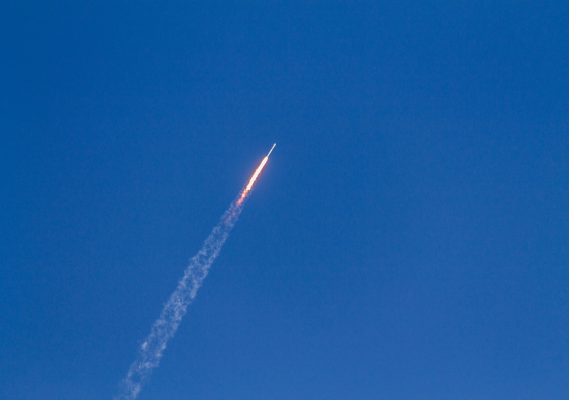11th April 2020 marked the 50th anniversary of the ill-fated Apollo 13 mission to the moon and their near miraculous return to Earth. The popular story of resolving the seemingly hopeless crisis against the odds through creative problem solving, improvisation and inspired leadership is well-known. But, what was NASA’s approach to contingency planning and what surprising leadership behaviours enabled them to resolve a situation that initially threw them into chaos? We examine what lessons there may be for today’s pressing crisis.
Control Through Chaos
In training project leaders to deal with critical issues, we use the moments after the explosion on board the Apollo 13 command module Odyssey to illustrate key points on handling the situations that can derail strategic initiatives. The opening hours of chaos, confusion and misdiagnosis are strangely reassuring in the current crisis, but the records reveal NASA had invested heavily in contingency planning in preference to improvisation, and its leaders handled the crisis in a more flexible manner than many might assume.
In those early hours when it was proving impossible to discern cause and effect, loss of control of the situation was never far away and there was skilful leadership of the different teams by the flight directors and in particular, Gene Kranz. It’s interesting to listen to the recordings of the transmissions and hear the lengths a young team went to in maintaining open communication, even when no one was able to present a clear picture of the situation. As in the current crisis, waiting to communicate clearly until the hypotheses can be confirmed can easily make the situation worse and propagate uncontrolled speculation.
Leadership in a Crisis
The immediate follow-up to the incident showed some other interesting leadership behaviours. Well before control had been established, the relief shift of mission controllers arrived. Gene Kranz exhibited clear trust in his colleagues and the ability to read his own limitations in being able to hand on the situation, having played his full part to that point. We can all think of examples of leaders who cling desperately to the helm in a crisis, unable to recognise when they have reached the end of their energy, or expertise. Leaders need to know when to pass the baton.
NASA also exhibited a surprisingly flexible response to delegation. Teams were given wide latitude and responsibility to solve the myriad of problems, exhibiting more ‘mission command’ than ‘command and control’. Leaders saw their roles as to resist the pressure to tighten control during the crisis, whilst providing vital context, encouragement and constructive challenge to teams focused on the key issues. Expertise and proximity to the presenting problem trumped age and job rankings. Similarly, we have found Autonomous Accelerated Recovery Teams (AARTs) being focused towards the biggest issues, with leaders known for commitment, energy, and emotional intelligence, are very effective at accelerating organisations out of crises.
Scenario Planning
Short of oxygen and confined to the lunar module that was not designed for the number of crew, or duration of occupation necessary to rescue the mission, there was exemplary problem solving and collaboration to create improvised CO2 scrubbers. But, despite this impressive capability, NASA had already practiced many of the other improvisations that were needed to recover the total situation. A belief that preparing thoroughly for the unlikely was a better strategy that relying on solving difficult problems flawlessly in the heat of the moment. Kranz, in the preparation for earlier moon landings, said “I want you to study every possible program alarm, whether they can happen or not”. This fastidious approach to contingency planning paid off on numerous occasions less high-profile than this incident.
Hence, there were contingency plans already for shutting down the command module to save battery power, manoeuvring without their guidance computers, and using the lunar module’s engines to fly the command module. Today’s COVID-19 crisis was inevitable, although indeed a once-in-a-century occurrence. Although this had been at the top of the risk registers of various governments and health organisations for many years, the timing was unforeseeable and other more clearly time-bound priorities had dominated decision-makers’ attention. Therefore not all the right contingencies were in place in order to minimise the amount of crisis response planning still necessary in the heat of the moment.
Conclusion
We have exercised senior business leaders and their teams in our own crisis simulation scenario, involving responding to a devastating hurricane hitting a developing country. Whether it is the behaviours we observe and coach in this, NASA’s exemplary response to the explosion on the Odyssey 50 years ago, or our political leaders grappling with the COVID-19 crisis, the same lessons repeat.
Political chronicler and educationalist Sir Anthony Seldon has suggested every government crisis team should contain a historian. Learning lessons is key to surviving crises; an evolutionary adaptation beyond flight-or-flight. The wrong time to learn on the job is in the heat of the moment and organisations need to think carefully of the expertise they need on hand to guide them through these challenging times.
Find out more at the BBC’s season two of 13 Minutes to the Moon: https://www.bbc.co.uk/programmes/w13xttx2
